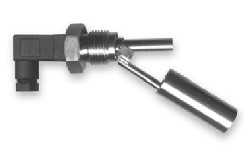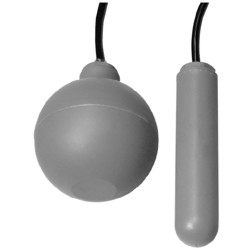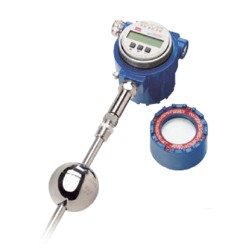Modern float level sensors
Floating level sensors
Float switches are one of the cheapest and at the same time reliable devices for measuring the level of liquids. With the right selection, float switches can be used to monitor the level of a wide variety of products ranging from waste water, chemically aggressive liquids or food. High or low temperatures, the presence of foam, bubbles or, for example, a working stirrer, also cease to be a problem with the right choice.
The device of float level sensors
By design, float level sensors can be divided into several types.
The simplest is a float sensor that moves along a vertical stem. Inside the float, as a rule, there is a permanent magnet, and in the rod, which is a hollow tube, there is reed switches… Floating on the surface of the liquid, the float moves along the sensor rod after the level change and, passing by the reed switches inside the rod, closes them or, on the contrary, opens them. Signaling when a certain level is reached.Several reed switches can be located inside the stem at once, and accordingly, one such sensor can signal several values of the liquid level at once, for example, the minimum and the maximum.
 A float switch of this design can also measure continuous liquid level and provide a signal in the form of a resistance proportional to the liquid level or as a standard 4-20mA current signal. For this purpose the reed switches inside the stem are connected in parallel with resistors as shown in the figure. The float, moving after the change in liquid level, closes various reed switches, causing a change in the total resistance of the level sensor. These level sensors are usually installed on top of the tank and can be up to three meters long.
A float switch of this design can also measure continuous liquid level and provide a signal in the form of a resistance proportional to the liquid level or as a standard 4-20mA current signal. For this purpose the reed switches inside the stem are connected in parallel with resistors as shown in the figure. The float, moving after the change in liquid level, closes various reed switches, causing a change in the total resistance of the level sensor. These level sensors are usually installed on top of the tank and can be up to three meters long.
A separate area of application of float level sensors is the monitoring of liquid levels in vehicles. First of all, these are tasks of controlling the volume of fuel in heavy equipment: trucks, excavators, diesel locomotives. Here, the level sensors work in conditions of strong vibrations and agitation on the surface of the liquid. In order to eliminate the influence of these factors, the float sensor is placed in a special damping tube with a diameter slightly larger than the diameter of the float.
 If it is not possible to install the sensor on the tank, then the float level sensor can be built into the tank wall. In this case, the magnet float is mounted on hinges, and the reed switch is usually in the sensor body.These sensors are triggered when the liquid reaches the float and are designed to signal a limit level. The sensors can operate at temperatures up to 200 C in chemically aggressive environments. It should be remembered that level sensors of this type are not suitable for measuring sticky and drying liquids, liquids with mechanical impurities, as well as in the case of freezing liquids.
If it is not possible to install the sensor on the tank, then the float level sensor can be built into the tank wall. In this case, the magnet float is mounted on hinges, and the reed switch is usually in the sensor body.These sensors are triggered when the liquid reaches the float and are designed to signal a limit level. The sensors can operate at temperatures up to 200 C in chemically aggressive environments. It should be remembered that level sensors of this type are not suitable for measuring sticky and drying liquids, liquids with mechanical impurities, as well as in the case of freezing liquids.
If there is a high concentration of solids in the liquid, there is a possibility of freezing or creating a sticky layer on the equipment, then a float level sensor on a flexible cable can be used to control the level in this case. A level sensor of this type is a plastic cylinder or sphere, inside which there is a mechanical or reed switch and a metal ball. Such a level sensor is attached to the cable at the desired depth, and when the liquid level reaches the float, it turns and a metal ball inside in it activates a reed switch or mechanical switch. An example of such level sensors is the LFL series of float level sensors from Pepprl + Fuchs.
Magnetostrictive level sensors
 There is another type of float level sensor—magnetostrictive sensors. Their principle of operation is based on measuring the propagation time of an ultrasonic pulse inside a metal rod equipped with a float with a built-in magnet. This is probably the most accurate type of level sensor. Typical accuracy of magnetostrictive sensors is 10 microns or better.
There is another type of float level sensor—magnetostrictive sensors. Their principle of operation is based on measuring the propagation time of an ultrasonic pulse inside a metal rod equipped with a float with a built-in magnet. This is probably the most accurate type of level sensor. Typical accuracy of magnetostrictive sensors is 10 microns or better.
Magnetostrictive sensors are produced for example by Balluff (Micropulse), MTS Sensors (Temposonic and Level Plus), TR Electronic and others.Another difference from traditional level sensors is that in magnetostrictive level sensors, a flexible cable can be used as a rod along which the float moves. In this way, the measured length can be 12 meters or more, while maintaining unsurpassed measurement accuracy.
